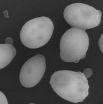(Press-News.org) According to an Emory University study, teenagers with high sugar diets may be in store for heart problems as adults.
A study published in the Jan. 10 online issue of the journal Circulation finds teens who consume elevated amounts of added sugars in drinks and foods are more likely to have poor cholesterol and triglyceride profiles now which may lead to heart disease later in life.
The study also finds that overweight or obese teens with the highest levels of added sugar intake had increased signs of insulin resistance, often a precursor to diabetes.
According to the American Heart Association, "added sugars" are any caloric sweeteners added to foods or beverages in the manufacturing process or by the consumer.
"Adolescents are eating 20 percent of their daily calories in sugars that provide few if any other nutrients," says Jean Welsh, MPH, PhD, RN, study author and post-doctoral fellow in pediatric nutrition at Emory University School of Medicine. "We know from previous studies the biggest contributors of added sugars to the diet are sugar-sweetened beverages such as sodas, fruit-flavored drinks, and sweetened coffees and teas"
This is the first study to assess the association of added sugars and the indicators of heart disease risk in adolescents, Welsh says.
Study Details:
The National Health and Nutrition Survey (NHANES) of 2,157 teenagers (ages 12 to 18) found the average daily consumption of added sugars was 119 grams (28.3 tsp. or 476 calories), accounting for 21.4 percent of their total energy.
Teens consuming the highest levels of added sugars had lower levels of high- density lipoprotein levels (HDL), the good cholesterol, and higher levels of triglycerides and low density lipoproteins (LDL), the bad cholesterol.
Teenagers with the highest levels of added sugar consumption at more than 30 percent of total energy had 49.5 milligrams/deciliter (mg/dL) compared to 54 mg/dL of HDL levels in those with the lowest levels of added sugar consumption — a 9 percent difference.
The study included dietary recall from one 24-hour period that researchers merged with sugar content data from the U.S. Department of Agriculture My Pyramid Equivalents Databases. Researchers estimated cardiovascular risk by added sugar consumption of less than 10 percent up to more than 30 percent of daily total energy.
Two days of dietary data were used among a subsample of 646 adolescents and the key findings remained consistent:
Those with higher intake of added sugar had higher LDL levels of 94.3 mg/dL compared to 86.7 in those with the lowest levels, a 9 percent difference.
Triglyceride levels in those with the highest consumption were 79 mg/dL compared to 71.7 mg/dL among the lowest, a 10 percent difference.
Overweight or obese adolescents with the highest level of added sugar consumption had increased signs of insulin resistance.
INFORMATION:
The Robert W. Woodruff Health Sciences Center of Emory University is an academic health science and service center focused on missions of teaching, research, health care and public service. Its components include the Emory University School of Medicine, Nell Hodgson Woodruff School of Nursing, and Rollins School of Public Health; Yerkes National Primate Research Center; Winship Cancer Institute of Emory University; and Emory Healthcare, the largest, most comprehensive health system in Georgia. Emory Healthcare includes: The Emory Clinic, Emory-Children's Center, Emory University Hospital, Emory University Hospital Midtown, Wesley Woods Center, and Emory University Orthopaedics & Spine Hospital. The Woodruff Health Sciences Center has a $2.5 billion budget, 17,600 employees, 2,500 full-time and 1,500 affiliated faculty, 4,700 students and trainees, and a $5.7 billion economic impact on metro Atlanta.
Learn more about Emory's health sciences: http://emoryhealthblog.com - @emoryhealthsci (Twitter) - http://emoryhealthsciences.org
Melt off from small mountain glaciers and ice caps will contribute about 12 centimetres to world sea-level increases by 2100, according to UBC research published this week in Nature Geoscience.
The largest contributors to projected global sea-level increases are glaciers in Arctic Canada, Alaska and landmass bound glaciers in the Antarctic. Glaciers in the European Alps, New Zealand, the Caucasus, Western Canada and the Western United Sates--though small absolute contributors to global sea-level increases--are projected to lose more than 50 per cent of their current ice ...
A Spanish study has challenged the long-held belief that people in the Mediterranean all enjoy more healthy diets and lifestyles, after discovering alarmingly high cardiovascular risk factors similar to those found in the UK and USA.
Research published in the January issue of IJCP, the International Journal of Clinical Practice, also found strong links between low levels of education and increased risk.
"Cardiovascular diseases account for 33 per cent of deaths in Spain, making it the main cause of mortality in the country" says Dr Ricardo Gómez-Huelgas from the Internal ...
A strange, glowing green cloud of gas that has mystified astronomers since its discovery in 2007 has been studied by Hubble. The cloud of gas is lit up by the bright light of a nearby quasar, and shows signs of ongoing star formation.
One of the strangest space objects ever seen is being scrutinised by the penetrating vision of the NASA/ESA Hubble Space Telescope. A mysterious, glowing green blob of gas is floating in space near a spiral galaxy. Hubble uncovered delicate filaments of gas and a pocket of young star clusters in the giant object, which is the size of the ...
Hope for new ways of treating devastating neurodegenerative disorders such as Huntington's disease has been raised by a trans-Atlantic team of researchers thanks to the use of cutting-edge genetic techniques.
Led by the University of Leicester, scientists from the University of Lisbon (led by Dr Tiago Outeiro) and University of California at San Francisco (led by Dr Paul Muchowski) collaborated to generate novel approaches for tackling the diseases. Their work, funded by the Medical Research Council, is published in The Journal of Biological Chemistry.
At Leicester, ...
New research published today, shows how light can be used to control the electrical properties of graphene, paving the way for graphene-based optoelectronic devices and highly sensitive sensors.
This year's Nobel Prize for Physics was awarded for research into graphene, recognising its potential for many applications in modern life, from high-speed electronics to touchscreen technology. The UK's National Physical Laboratory, along with a team of international scientists, have further developed our understanding of graphene by showing that when this remarkable material ...
A team of researchers has demonstrated that the brain predicts consequences of our eye movements on what we see next. The findings, which appear in the journal Nature Neuroscience, have implications for understanding human attention and applications to robotics.
The study was conducted by researchers at University Paris Descartes, New York University's Department of Psychology, and Ludwig-Maximilian University in Munich.
Our eyes jump rapidly about three times each second to capture new visual information, and with each jump a new view of the world falls onto the retina—a ...
The federal peer review system, by which research proposals are judged worthy for funding, may be "over stretched" and "susceptible to error," said Elmer Yglesias, a researcher at the Science and Technology Policy Institute and author of "Improving Peer Review in the Federal Government," published in the current issue of TECHNOLOGY & INNOVATION, Proceedings of the National Academy of Inventors ™, (www.academyofinventors.org) now available on-line at: http://www.cognizantcommunication.com/filecabinet/Technology/techinnovation.html
According to Yglesias, the federal ...
The number and scale of forest fires has increased dramatically in recent decades. Who can forget last summer's television images of blazing infernos devouring miles and miles of forest in Russia, Australia and California? In Germany, too, several regions are under threat precipitated by climate change – Brandenburg, for example, is one of the areas of Europe that are most at risk.
Often, fires can only be contained from the air. In order to fight them in a targeted way, firefighting planes need to be given precise information on where the flames are at their worst. Infrared ...
The so-called "superstreet" traffic design results in significantly faster travel times, and leads to a drastic reduction in automobile collisions and injuries, according to North Carolina State University researchers who have conducted the largest-ever study of superstreets and their impacts.
Superstreets are surface roads, not freeways. It is defined as a thoroughfare where the left-hand turns from side streets are re-routed, as is traffic from side streets that needs to cross the thoroughfare. In both instances, drivers are first required to make a right turn and ...
Monday, January 10, 2011 – Cleveland – Researchers have discovered a method for more precise identification of individuals who should undergo testing for genetic mutations of the tumor suppressor gene PTEN, which associates with a variety of conditions including several types of cancers. The research has created a diagnostic scoring system that improves on established criteria.
Led by Charis Eng, M.D., Ph.D., Chair of the Genomic Medicine Institute at the Lerner Research Institute of Cleveland Clinic, the study – the largest clinical study to date on the identification ...



